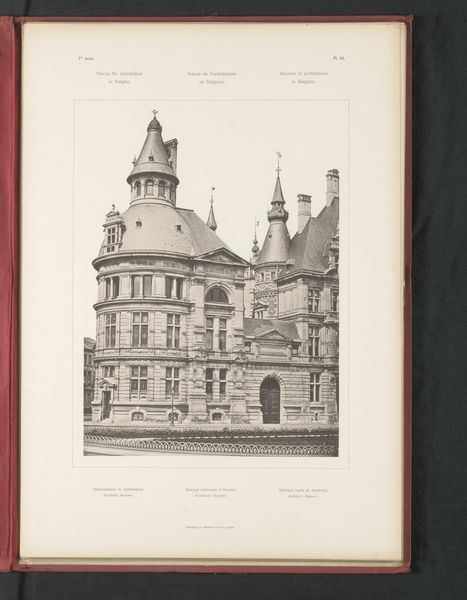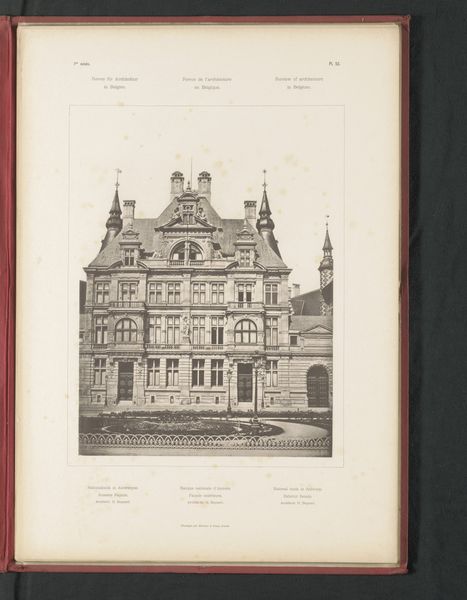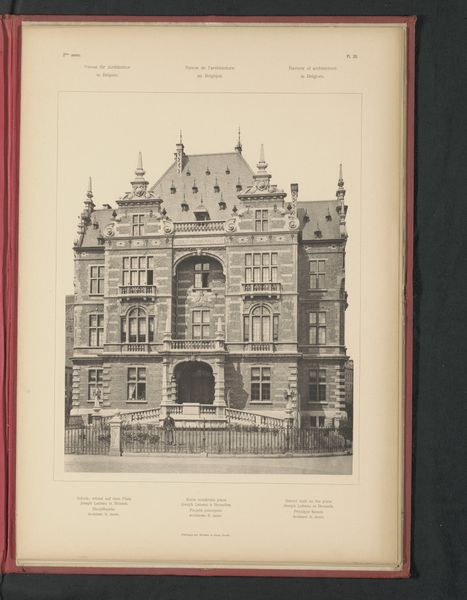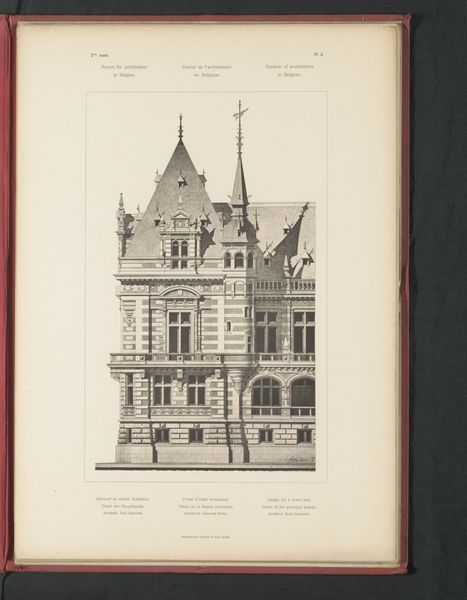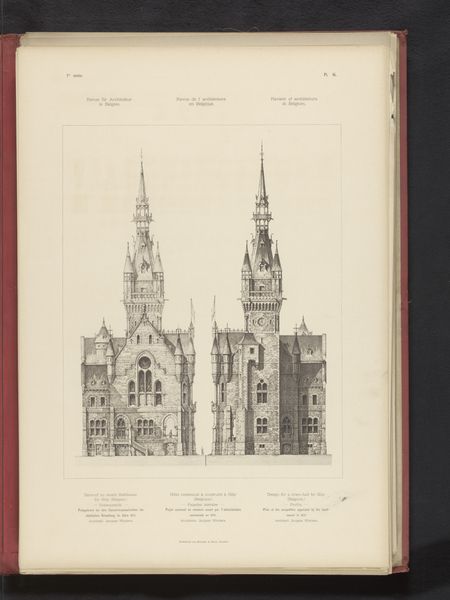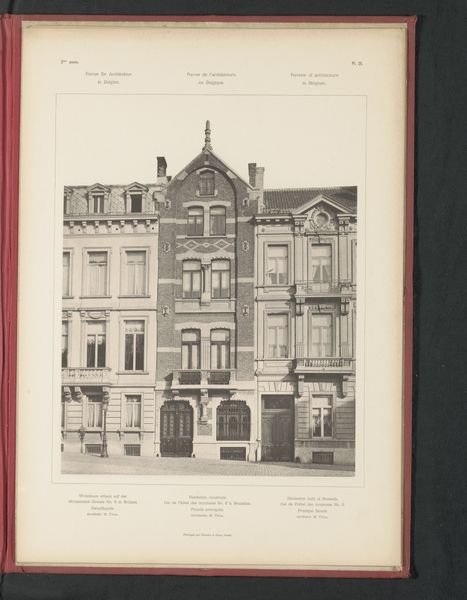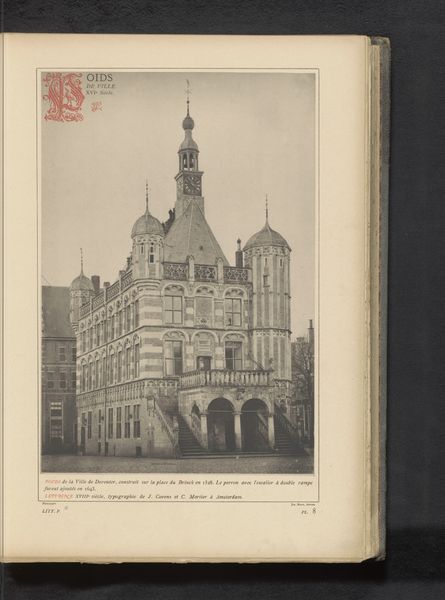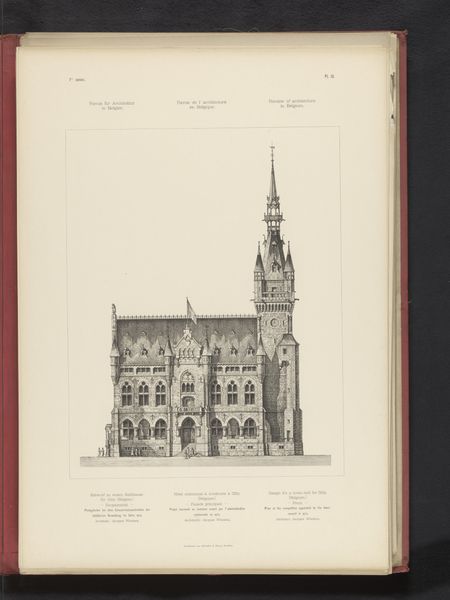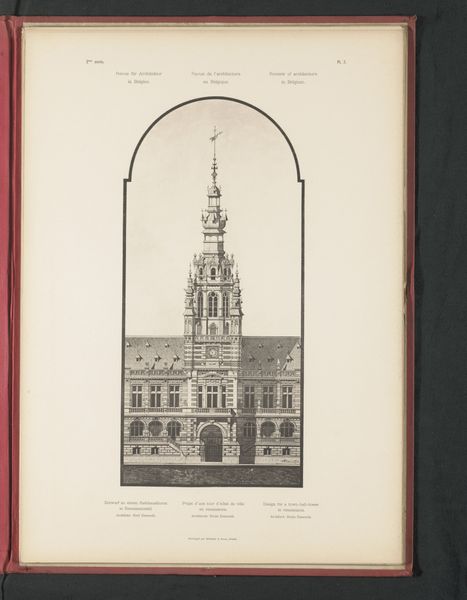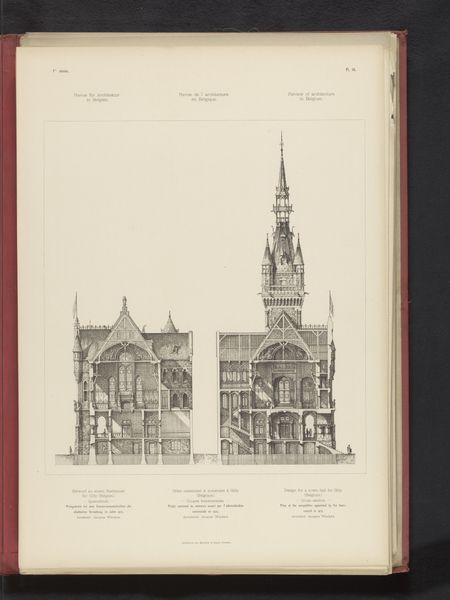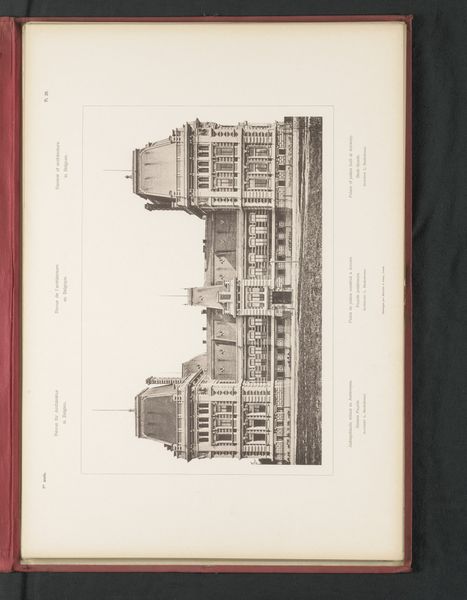
Gezicht op het gebouw van de nationale bank in Antwerpen, België before 1893
0:00
0:00
rommlerjonas
Rijksmuseum
drawing, print, architecture
#
drawing
# print
#
cityscape
#
academic-art
#
architecture
#
realism
Dimensions: height 356 mm, width 255 mm
Copyright: Rijks Museum: Open Domain
Curator: Welcome. We’re looking at "Gezicht op het gebouw van de nationale bank in Antwerpen, België," an image created before 1893 by Römmler & Jonas. It’s currently held in the Rijksmuseum collection. Editor: The overall tonality here seems very cool and rational, almost clinical in its precise depiction. I’m immediately struck by the dominance of architectural form, the solidity of the bank itself against the indeterminate background. It certainly speaks to the values of order and authority. Curator: The work indeed operates through its lines and structure. Note how the receding planes establish spatial depth, framing the ornate facade with the meticulous accuracy that defines academic art. The realism employed seems focused on objective detail rather than emotive expression. Editor: True, but let's also consider how such a highly detailed print was made and consumed. I wonder about the engravers, etchers, and printers. The division of labor is worth exploring—who owned the means of production here, and for what purposes did the Nationale Bank commission or disseminate such prints? Were they widely distributed, or meant for a select audience? Curator: Intriguing points! The medium—drawing and printmaking—itself demands a methodical, repetitive action which harmonizes with the image’s message of regulated stability. Each line is a deliberate construction of this monumental impression. Editor: And the monumental is critical—what kinds of labor went into physically constructing such a massive edifice? The choice of building materials also reinforces the message. That facade speaks of wealth accumulation as well as institutional solidity through its careful assemblage and ornamentation. I suppose what interests me most is how the print participated in producing and celebrating Belgian capitalist interests. Curator: Indeed, considering such aspects reveals the latent ideologies behind these artistic expressions. This offers viewers insights into their cultural relevance when viewed as symbols intended both architecturally and symbolically by RÖmmler & Jonas. Editor: I agree. Examining artwork, in relation, is a necessary engagement for interpreting a historic visual imprint that served a capitalist aesthetic as we find depicted here today.
Comments
No comments
Be the first to comment and join the conversation on the ultimate creative platform.
